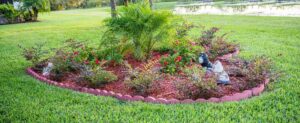So your garden is getting overrun by weeds. It’s time to get the big guns out, right? You need to wander down to the outdoor store, find a vicious herbicide, and spray until everything is culled.
Efficient and effective no doubt, but environmentally friendly? Not particularly.
If you’re concerned about the contamination of your soil or water supply through the use of a store-bought synthetic herbicide, there may be an opportunity to try a more home-made approach to your weed extermination.
Here are just a few examples of herbicidal options that you can rustle up from common household items.

Boiling Water
That stuff that all plants and animals need to survive? If it’s hot enough, it can do the exact opposite. Just as a human doesn’t like to directly deal with water at 100C, plants also aren’t particularly fond. By bringing your freshly boiled kettle out into the garden and lightly pouring the water onto any unwanted growers, you’ll damage the leaves and stems enough to kill the weed quickly and easily.
Boiling water is about as non-selective as a herbicide gets, so be sure to take care with your aim. Boiling water is brilliant for weed growth between bricks and pavers, or anywhere else where accuracy of application isn’t paramount.
Throw Some Flame
The principle is the same as boiling water, but with the right tool flame weeding can be a far better spot weeder, as you can accurately target specific weeds that may be lurking in and amongst your flower bed favourites.
Applying a direct flame to the foliage will be enough to make most weeds keel over, but any that survive the first dose won’t get through repeated blazings. A flame-weeder can be bought or hired from most gardening stores, although in Australia it is to be done with the utmost care, and never in fire danger season.
Spray Some Salt
Back in the days of conquering lands and enslaving slaves, a ‘kick them while their down’ approach to newly captured territories was to salt the earth, stopping crops from growing and making people easier to suppress.
Rather than salting the soil and ruining its fertility, applying a spray solution directly to the plants is a far better bet. Dissolve 1 part salt into 6 parts water, then add a small amount of liquid soap (this helps the solution stick to the surface of the weeds). To avoid cross-contamination, covering nearby plants with plastic is advisable.

Vinegar Doesn’t Just Preserve
The white vinegar that you pick up from the local supermarket has acetic acid in it – plants hate acetic acid. The off-the-shelf cooking vinegar will be about 5 percent acetic acid, and when it’s sprayed onto the leaves of most weeds, will soon brown them off until they’re dead.
Some weeds may be resilient enough to survive, in which case it may be worth considering a garden specific acetic concoction, available from most outdoor stores, that can have acid levels of up to 20 percent. The same rules apply with this as with the salt spray though – be careful where you spray it, and add dishwashing soap to assist the adherence.
Wash Their Mouths Out
Borax Soap, the age-old household cleaner, can actually double as a handy weed killer. Made from the Sodium Borate that naturally occurs in dried up lake beds, its combination of salts, acids and other minerals make it a cheap and effective option.
Simply dissolve 400 grams of powdered borax into 10 litres of water, fill your garden sprayer up, and apply directly to nuisance plants. As with all these remedies, they are non-selective and can affect the soil, so take care with spraying. With Borax you’ll also want to keep free of skin contact, as it can be very irritating.
When it comes to environmental friendliness though, nothing beats getting down on your knees and digging the weeds out separately. If this takes up too many hours, the techniques above may help in controlling your weeds without needing to rely on heavy duty synthetics.
As we’ve pointed out, using homemade weed killers or non-synthetic herbicidal techniques will usually result in the non-selective killing of plant life, but as long as you’re careful, it can result in a cheaper and more environmentally friendly way to control garden intruders.
 Free Metro Shipping, orders over $75
Free Metro Shipping, orders over $75

